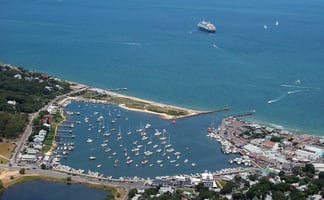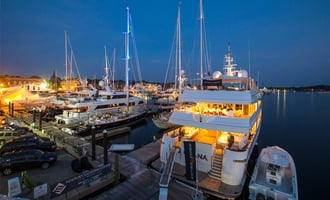The Realities of Stray Currents and the Need for Electrical Isolation at Marinas
Post by Team Xantrex - Published on 05/03/25 4:00 AM
Why do stray electrical currents matter so much to the boating community? Because electrical safety is a shared responsibility. One overlooked fault or misstep can impact an entire dock, so by understanding the science behind stray currents, and the role shore power isolation plays in preventing them, boaters can take proactive steps to protect themselves, their vessels, and their neighbors. Learn more below, direct from the experts at Xantrex.
The Realities of Stray Currents and the Need for Electrical Isolation at Marinas
By Team Xantrex
Boating is all about freedom, adventure, and the sense of security that comes from being prepared for anything on the water. Boaters have routines, we check the weather, inspect life jackets, and run through engine checks before heading out. Yet, when it comes to plugging into shore power at a marina, we may not think twice before connecting our vessel to a shared, sometimes unpredictable, electrical network. The risks involved with dock power are often ignored, but their effects can be really costly.
Stray currents are the electrical equivalent of leaks in a plumbing system. They are not supposed to be there, but a combination of aging infrastructure, improper wiring, or a neighbor’s faulty equipment can allow small amounts of electricity to escape into the water. This is not a rare phenomenon. It’s surprisingly common for marinas to experience these invisible hazards, especially as boats, dock equipment, and electrical codes evolve at different speeds. One scenario might involve a worn-out shore power cord with cracked insulation. Another might be a neighboring vessel with a mis-wired battery charger, leaking current that travels through the marina’s ground circuit and finds an exit path through the water or, worryingly, through the metal parts of your boat.
The consequences of stray current can be both subtle and dramatic. At the low end, you might notice unusual corrosion on your propeller, shaft, or through-hull fittings. This process, known as galvanic corrosion, is like a slow, invisible thief-eating away at underwater metals even while you’re tied safely at the dock. Over time, maintenance costs rise as fittings need more frequent replacement. More alarming is the risk of Electric Shock Drowning (ESD), a phenomenon where even a small electrical current in the water can paralyze swimmers, making it impossible to escape before tragedy strikes. These dangers are not just theoretical; they are documented in countless marina incident reports and have led to both injuries and fatalities.
So, what’s really happening at the electrical level? When a boat plugs into shore power, there’s a direct electrical connection from dock to boat. Without some form of isolation, any electrical fault or imbalance, even if it originates in a neighboring vessel or dockside circuit, can use your boat as a path to ground. This not only puts your vessel at risk but can compromise the entire marina’s safety.
Shore power isolation is the practice of breaking that direct path by inserting a device (such as an isolation transformer) between the dock’s power and your boat’s electrical system. This device transfers energy magnetically rather than electrically, meaning there’s no direct wire link that stray current can use to travel back and forth. The science is simple, but the impact is huge: electrical isolation not only blocks stray current and helps to reduce galvanic corrosion, but it also stabilizes voltage and cleans up “dirty” shore power before it reaches sensitive onboard electronics.
The conversation around electrical safety in marinas is becoming more urgent as regulations evolve. The National Electrical Code, specifically NEC 555.35, now sets strict limits on ground-fault leakage currents in marinas and docking facilities. The logic is clear: controlling these currents prevents many of the electrical hazards that have plagued marinas in the past. It’s not just about compliance; it’s about protecting lives and property. Many marina operators are updating their infrastructure and increasing compliance checks, while insurance providers are tightening their own requirements. Boats that repeatedly trip ground-fault breakers or show evidence of excessive leakage may face restricted shore power access or higher insurance premiums. There’s a growing expectation that boaters themselves take responsibility for the electrical safety of their vessels.
Why does this matter so much to the boating community? Because electrical safety is a shared responsibility. One person’s inattention or a single faulty component can affect an entire dock. By understanding the science of stray currents and the practical importance of shore power isolation, boaters empower themselves to take proactive steps, whether that’s scheduling an annual electrical inspection, learning about the latest NEC standards, or simply asking the marina manager about their ground-fault protection protocols.
Proper shore power isolation isn’t just a “nice-to-have.” It’s a vital practice for protecting your investment, your crew, and your fellow boaters. This Safety First and Always message is about more than just compliance - it’s about cultivating a mindset where safety, education, and community go hand in hand.
Be the first to access boater stories like this one by subscribing
to our boater newsletters,The Running Fix and Dock Talk!
.png)







